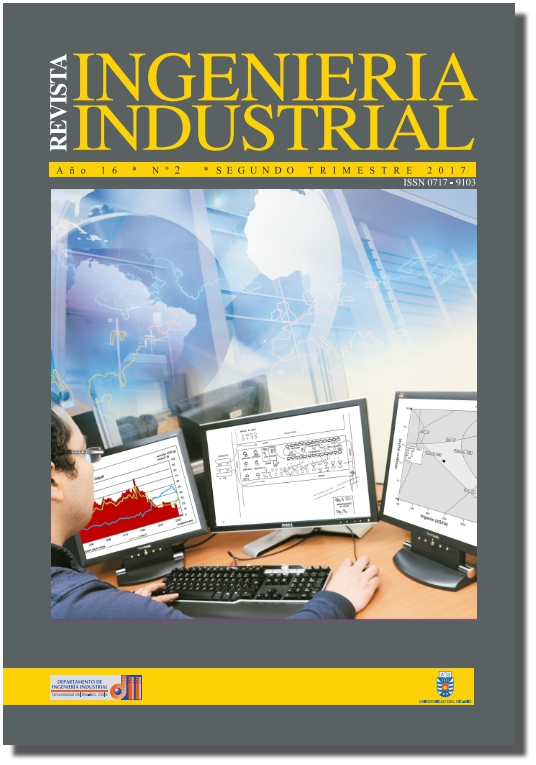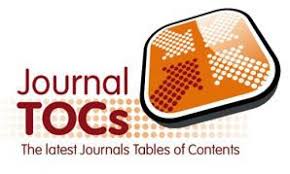Aplicação das capacidades dinâmicas para Inovação: identificação das rotinas associadas ao Processo de inovação em uma empresa de grande Porte
DOI:
https://doi.org/10.22320/s07179103/2017.08Palabras clave:
Innovación, capacidades dinámicas, gestión de la innovaciónResumen
O desenvolvimento das capacidades dinâmicas é relevante para inovar e melhorar o desempenho da firma. O estudo avaliou as capacidades dinâmicas de uma empresa de grande porte. Foram identificados na literatura os tipos de capacidades dinâmicas e realizadas entrevistas semiestruturadas para identificar as rotinas associadas às capacidades dinâmicas existentes em uma empresa de grande porte. Foi identificado um conjunto de rotinas que ilustra a aplicação das capacidades dinâmicas dentro da empresa avaliada.
Descargas
Citas
AMBROSINI, V. and BOWMAN, C. What are dynamic capabilities and are they a useful construct in strategic management? International Journal of Management Reviews, 2009, 11(1), 29-49.
ANDREW, J.P., MANGET, J., MICHAEL, D.C., TAYLOR, A. and ZABLIT, H. BCG Report Innovation 2010: A return to prominence – and the emergence of a new world order. [online] BCG Group, 2010. Disponível em: http://www.bcg.com/documents/file42620.pdf.
AR, I.M. and BAKI, B. Antecedents and performance impacts of products versus process innovation. European Journal of Innovation Management, 2011, 14(2), 172-206.
BARRALES-MOLINA, V., BUSTINZA O.F. and GUTIÉRREZ-GUTIÉRREZ, L.J. Explaining the Causes and Effects of Dynamic Capabilities Generation: A Multiple-Indicator Multiple-Cause Modelling Approach. British Journal of Management, 2013, 24(4), 571-591.
BARRETO, I. Dynamic Capabilities: A Review of Past Research and an Agenda for the Future. Journal of Management, 2010, 36(1), 256-280.
BOWMAN, C. and AMBROSINI V. How the Resource-based and the Dynamic Capability Views of the Firm Inform Corporate-level Strategy. British Journal of Management, 2003, 14(4), 289-303.
CETINDAMAR, D., PHAAL, R. and PROBERT, D. Understanding technology management as a dynamic capability: A framework for technology management activities. Technovation, 2009, 29(7), 237-246.
CHANG, Y., CHANG, H., CHI, H., CHEN, M. and DENG, L. How do established firms improve radical innovation performance? The organizational capabilities view. Technovation, 2012, 32(7), 441-451.
COOPER, D.R. and SCHINDLER, P.S. Business Research Methods. 12ª ed., New York, USA: McGraw-Hill, 2014.ISBN 0073521507.
CYERT, R.M. and MARCH, J.G. A behavioral theory of the firm. New Jersey, USA. Prentice-Hall, 1992. ISBN 0631174516.
DENNING, S. The reinvention of management. Strategy & Leadership, 2011, 39(2), 9-17.
DI STEFANO, G., PETERAF, M. and VERONA, G. Dynamic capabilities deconstructed: a bibliographic investigation into the origins, development, and future directions of the research domain. Industrial and Corporate Change, 2010, 19(4), 1187-1204.
ELLONEN, H., WIKSTRÖM, P. and JANTUNEN, A. Linking dynamic-capability portfolios and innovation outcomes. Technovation, 2009, 29(11), 753-762.
ERIKSSON, T. Processes, antecedents and outcomes of dynamic capabilities. Scandinavian Journal of Management, 2014, 30(1), 65-82.
FELIN, T. and FOSS, N.J. Organizational routines and capabilities: Historical drift and a course-correction toward microfoundations. Scandinavian Journal of Management, 2009, 25(2),157-167.
GRANT, R.M. The Resource-Based Theory of Competitive Advantage: Implications for Strategy Formulation. California Management Review, 1991, 33(3), 114-135.
HELFAT, C.E. and PETERAF, M.A. The dynamic resource-based view: capability lifecycles. Strategic Management Journal, 2003, 24(10), 997-1010.
HERSTAD, S.J., SANDVEN, T. and EBERSBERGER, B. Recruitment, knowledge integration and modes of innovation. Research Policy, 2015, 44(1), 138-153.
HERTOG, P., VAN DER AA, W. and DE JONG, M.W. Capabilities for managing service innovation: towards a conceptual framework. Journal of Service Management, 2010, 21(4), 490-514.
HO, L. Meditation, learning, organizational innovation and performance. Industrial Management & Data Systems, 2011, 111(1), 113-131.
JANTUNEN, A., ELLONEN, H. and JOHANSSON, A. Beyond appearances – Do dynamic capabilities of innovative firms actually differ? European Management Journal, 2012, 30(2), 141-155.
JONES, O. and CRAVEN, M. Beyond the routine: innovation management and the Teaching Company Scheme. Technovation, 2001, 21(5), pp. 267-279.
KESTING, P. and ULHOI, J.P. Employee-driven innovation: extending the license to foster innovation. Management Decision, 2010, 48(1), 65-84.
KOCH, A. Firm-internal knowledge integration and the effects on innovation. Journal of Knowledge Management, 2011, 15(6), 984-996.
KYRGIDOU, L.P. and, SPYROPOULOU, S. Drivers and Performance Outcomes of Innovativeness: An Empirical Study. British Journal of Management, 2013, 24(3), 281-298.
LEAL-RODRIGUES, A.L., ELDRIDGE, S., ROLDAN, J.L., LEAL-MILLAN, A.G. and ORTEGAGUTIÉRREZ,J. Organizational unlearning, innovation outcomes, and performance: The moderating effect of firm size. Journal of Business Research, 2015, 68(49), 803-809.
LEE, P., LIN, H., CHEN, H. and SHYR, Y. Dynamic capabilities exploitation of market and hierarchy governance structures: An empirical comparison of Taiwan and South Korea. Journal of World Business, 2011, 46(3), 359-37.
LIN, Y. and WU, L. Exploring the role of dynamic capabilities in firm performance under the resource-based view framework. Journal of Business Research, 2014, 67(3), 407-413.
MAKKONEN, H., POHJOLA, M., OLKKONEN, R. and KOPONEN, A. Dynamic capabilities and firm performance in a financial crisis. Journal of Business Research, 2014, 67(1), 2707- 2719.
MACHER, J.T., MOWERY, D.C. Measuring Dynamic Capabilities: Practices and Performance in Semiconductor Manufacturing. British Journal of Management, 2009, 20(s), 41-62.
MCKELVIE, A., DAVIDSSON, P. From Resource Base to Dynamic Capabilities: an Investigation of New Firms. British Journal of Management, 2009, 20(s), 63-80.
NELSON, R.R, WINTER, S.G. An evolutionary theory of economic change. Cambridge: Massachusetts: Belknap Press .1982. ISBN 0674272285.
NIEVES, J. and HALLER, S. Building dynamic capabilities through knowledge resources. Tourism Management, 2014, 40, 224-232.
PAVLOV, A., BOURNE, M. Explaining the effects of performance measurement on performance: An organizational routines perspective. International Journal of Operations & Production Management, 2011, 31(1), 101-122.
PENROSE, E. The Theory of the Growth of the Firm. Oxford: Oxford University Press. 1959. ISBN 0199573840.
PETERAF M. A. The cornerstones of competitive advantage: A resource-based view. Strategic Management Journal, 1993, 14, pp. 179-192.
PETERAF, M. A., DI STEFANO, G. and VERONA, G. The elephant in the room of dynamic capabilities: Bringing two diverging conversations together. Strategic Management Journal, 2013, 34(12), 1389-1410.
PRIEM, R. and BUTLER, J. Is the resource-based ‘‘view’’ a useful perspective for strategic management research? Academy of Management Review, 2001, 26(1), 22-40.
PRIETO, I.M., REVILLA, E. and RODRÍGUEZ-PRADO, B. Building dynamic capabilities in product development: How do contextual antecedents matter? Scandinavian Journal of Management, 2009, 25(3), 313-326.
ROTHAERMEL, F.T. and HESS, A.M. Building Dynamic Capabilities: Innovation Driven by Individual-, Firm-, and Network-Level Effects. Organization Science, 2007, 18(6), 898-92.
SCHUMPETER, J. The Theory of Economic Development. Massachusetts: Harvard University Press.1934. ISBN 9780674879904.
SCHWEIZER, L., ROGBEER, S. and MICHAELIS, B. The dynamic capabilities perspective: from fragments to meta-theory. Management Research Review, 2015, 38(7), 662-684.
TEECE, D.J. Explicating dynamic capabilities: the nature and microfoundations of (sustainable) enterprise performance. Strategic Management Journal, 2007, 28(3), 1319-1350.
TEECE, D.J., PISANO, G. and SHUEN, E. Dynamic capabilities and strategic management. Strategic Management Journal, 1997, 18(7), 509-533.
ZHENG, S., ZHANG, W., WU, X. and DU, J. Knowledge- based dynamic capabilities and innovation in networked environments. Journal of Knowledge Management, 2011, 15(8), 1035-1051.
WAN, F., WILLIAMSON, P.J. and YIN, E. Antecedents and implications of disruptive innovation: Evidence from China. Technovation, 2015, 39-40, 94-104.
WANG, C.L. and AHMED, P.K. Dynamic capabilities: a review and research agenda’, The International Journal of Management Reviews, 2007, 9(1), 31-51.
WERNERFELT, B. A Resource-Based View. Strategic Management Journal, 1984, 5(2), 171-180.
WILLIAMSON, O. Markets and hierarchies. Nova York: Free Press. 1975. ISBN: 0029353602.
ZAHRA, S.A., SAPIENZA, H.J. and DAVIDSSON, P. Entrepreneurship and Dynamic Capabilities: A Review, Model and Research Agenda. Journal of Management Studies, 2006, 43(4), 917-955.
ZIKMUND, W.G., BABIN, B.J., CARR, J.C. and GRIFFIN, M. Business Research Methods, 9ª ed., USA: Cengage Learning. 2012. ISBN 1111826927.
Descargas
Publicado
Número
Sección
Licencia

Esta obra está bajo una licencia internacional Creative Commons Atribución 4.0.
Revista Ingeniería Industrial by Revista Ingeniería Industrial is licensed under a Creative Commons Reconocimiento 4.0 Internacional License. Creado a partir de la obra en revistas.ubiobio.cl/index.php/RI/. Puede hallar permisos más allá de los concedidos con esta licencia en http://revistas.ubiobio.cl/index.php/RI/about/

















